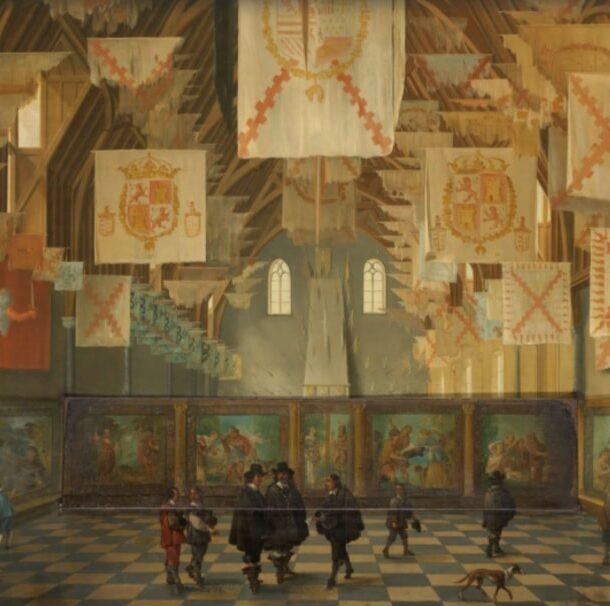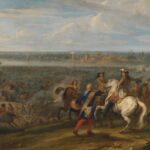
Leading an army of 120,000 troops, the French King Louis XIV invaded the Low Countries on 12 June 1672, in the context of the Franco-Dutch War (1672-1678). This conflict pitted the United Provinces (joined by Spain, the Holy Roman Empire and the Elector of Brandenburg-Prussia) against France (together with England, Sweden, Münster and Cologne), culminating in a French victory that made France the leading military and commercial power after the Treaty of Nimea (1678). The French offensive broke through the Rhine positions on 4 May in one of the most impressive displays of military power in the 17th century, the French first occupied Tongeren, Maaseik and Valkenburg. Leaving 10,000 men behind, the French army advanced along the Rhine, capturing Rheinber and Orsoy without resistance. Wesel, however, was the most important fortress. In his composition, the Flemish painter van der Meulen recorded some licences such as portraying the king in a glorious manner on a grey horse when he actually stayed in a nearby monastery.
Collection: Images
Project: 5. Power and powers in the history of Europe: oligarchies, political participation and democracy., 6. Under a cloak of terror: violence and armed conflict in Europe.
Chronology: XVII
Scope: Secondary Education, Baccalaureate, University
Link: https://www.rijksmuseum.nl/en/collection/SK-A-3753
Resource type: Image
Format: Oil on canvas (103 x 159 cm)
Source: Rijksmuseum (Ámsterdam)
Language: English
Date: 1672-90
Owner: Álvaro Romero González (Modernalia)
Identifier: SK-A-3753
Copyright: Rijksmuseum (Ámsterdam)
Abstract: Van der Meulen shows Louis XIV at the forefront of the battle against the Low Countries, although in reality his role had nothing to do with the Flemish painter's depiction
Image
Tags






